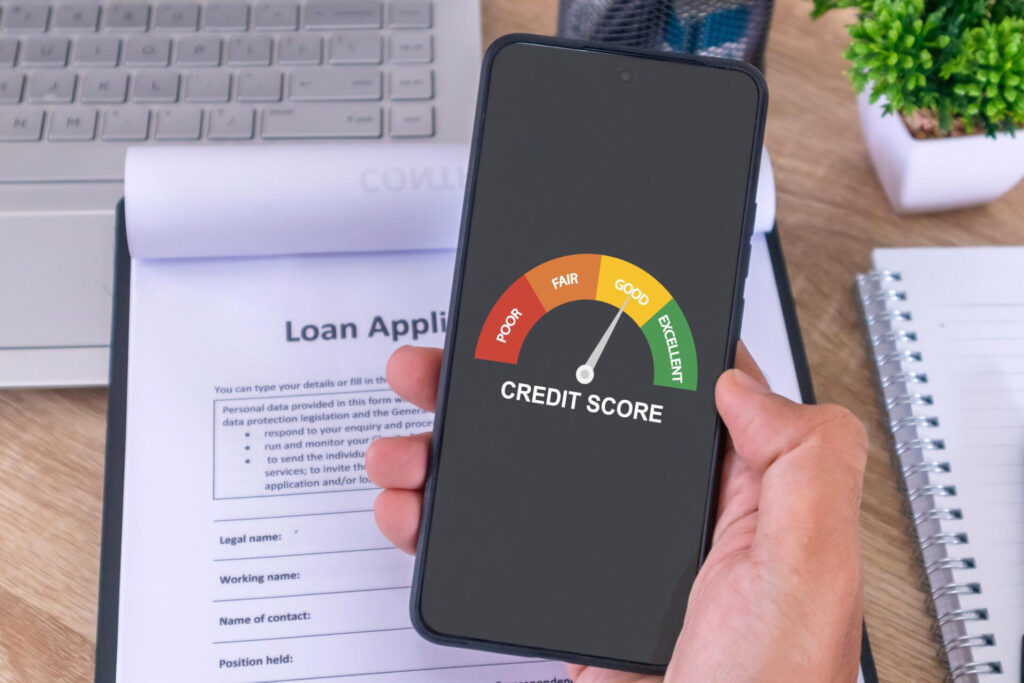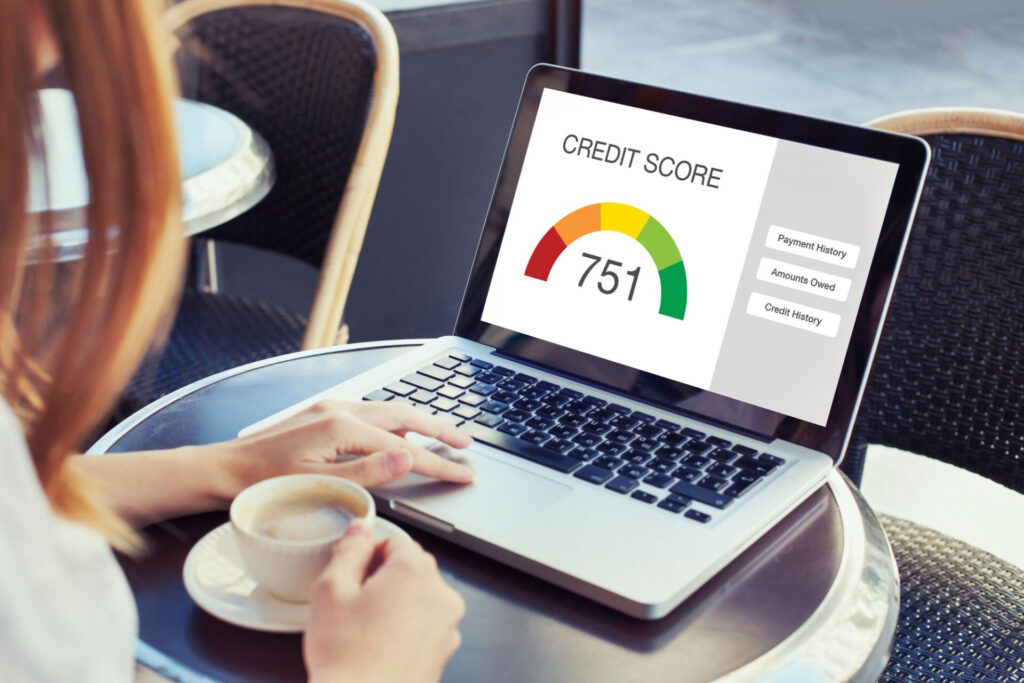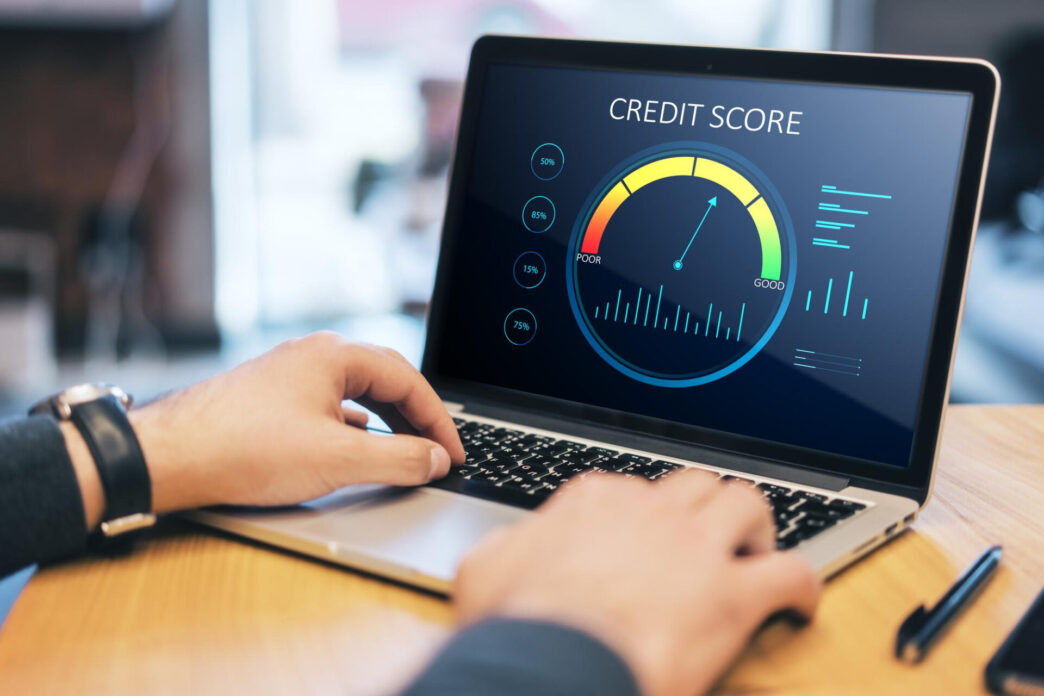Why You Need to Boost Your Credit Score Fast
In today’s world, your credit score is your financial fingerprint—a number that tells lenders, landlords, and even potential employers how trustworthy you are with money. Whether you’re dreaming of buying a home, leasing a car, or simply getting a better interest rate on your next loan, having a strong credit score makes a huge difference.
But here’s the truth most people miss:
🕒 You don’t need to wait years to see real improvement.
By using smart, proven methods, it’s possible to boost your credit score fast—in as little as 30 to 60 days.
📉 The Problem: Why Scores Stay Low
If your credit score is stuck in the “fair” or “poor” range, chances are you’re dealing with one or more of these:
- Old or unpaid debts
- High credit card balances
- Missed or late payments
- A thin credit history with too few accounts
- Errors or outdated information on your credit report
These issues don’t just hurt your credit—they cost you money. Higher interest rates, fewer approvals, and even insurance premiums are tied to your score. That’s why improving it is not just smart—it’s essential.
🎯 The Goal: Increase Credit Score Quickly and Sustainably
This guide is built to show you how to:
✔️ Fix credit report errors
✔️ Lower your credit utilization fast
✔️ Increase your credit limits strategically
✔️ Add positive history through alternative methods
✔️ Create long-term credit habits that work
Whether you want to fix bad credit fast or simply take your good score to the next level, the steps you’ll learn here will help you see measurable improvements—without gimmicks, hacks, or risky moves.
Let’s start with the first and most crucial step: getting a clear, accurate view of your credit report.
How Credit Scores Are Calculated
To understand how to boost your score, you first need to know what factors influence it. The most commonly used credit scoring model, FICO, is based on five key components:
| Factor | Weight in Score | What It Means |
|---|---|---|
| Payment History | 35% | On-time vs. late payments |
| Credit Utilization | 30% | How much of your available credit is used |
| Credit Age | 15% | The length of your credit history |
| Credit Mix | 10% | The variety of credit accounts you have |
| New Inquiries | 10% | Recent applications for new credit |
Since payment history and credit utilization make up 65% of your score, these should be your top priorities when looking for quick improvements.
Check Your Credit Report and Dispute Errors
How to Obtain Your Credit Report for Free
Before you can fix your credit score, you need to know exactly what’s on your credit report. Many people are unaware of errors or outdated information that might be dragging their scores down. According to a study by the Federal Trade Commission (FTC), one in five consumers has an error on at least one of their credit reports, and fixing these mistakes can lead to a quick score increase.
Under the Fair Credit Reporting Act (FCRA), you’re entitled to one free credit report per year from each of the three major credit bureaus:
- Experian (www.experian.com)
- Equifax (www.equifax.com)
- TransUnion (www.transunion.com)
You can obtain all three reports at AnnualCreditReport.com, the only federally authorized source. Until the end of 2026, you can get free weekly reports due to pandemic-related policy changes.
Common Errors That Hurt Your Score
Once you have your credit reports, check them carefully for errors. Some of the most common mistakes include:
✔️ Incorrect Personal Information – Wrong name, address, or Social Security number.
✔️ Duplicate Accounts – The same account appearing more than once, which can inflate your debt.
✔️ Inaccurate Payment History – Payments marked as late when they were actually made on time.
✔️ Fraudulent Accounts – Unauthorized accounts opened in your name due to identity theft.
✔️ Incorrect Credit Limits or Balances – Reporting higher debt than you actually owe can raise your credit utilization ratio.
Steps to Dispute Inaccuracies Effectively
If you find errors, disputing them is one of the fastest ways to increase your score. Here’s how:
- Gather evidence – Collect bank statements, payment confirmations, or any proof that shows the reported information is incorrect.
- Submit a dispute to the credit bureau – Each bureau has an online dispute center where you can file a claim:
- Experian: Dispute here
- Equifax: Dispute here
- TransUnion: Dispute here
- Write a formal dispute letter (if needed) – While online disputes are the fastest, you can also send a written dispute via mail for legal documentation.
- Follow up – Credit bureaus must respond within 30 days. If they agree with your dispute, they’ll correct the error and update your credit report, which could lead to a score increase almost immediately.
How Quickly Can This Improve Your Score?
The impact depends on the error, but many people see their scores rise by 20–100 points within a month after correcting a major mistake. If a wrong late payment or incorrect high balance was dragging your score down, expect a significant improvement.
Key Takeaway
Checking your credit report and removing errors is one of the fastest and easiest ways to boost your credit score. Even if you don’t find major mistakes, this step gives you a clear picture of where you stand before tackling other strategies.
Next, we’ll look at how to pay down credit card balances strategically to improve your score quickly.
Pay Down Credit Card Balances Strategically
Understanding Credit Utilization Ratio
One of the biggest factors affecting your credit score is your credit utilization ratio—the percentage of your available credit that you’re using. It makes up 30% of your FICO score, meaning high balances can significantly lower your score, even if you make payments on time.
How Credit Utilization is Calculated
Your credit utilization ratio is determined by dividing your total credit card balances by your total credit limits and multiplying by 100.
For example:
- Credit card limit: $10,000
- Current balance: $4,000
- Utilization ratio: (4,000 ÷ 10,000) × 100 = 40%
A good rule of thumb is to keep utilization below 30%, but for the best credit scores, aim for under 10%.
| Utilization Ratio | Credit Score Impact |
|---|---|
| 0–9% | Excellent |
| 10–29% | Good |
| 30–49% | Fair |
| 50–69% | Poor |
| 70%+ | Very Poor |
The Best Ways to Lower Your Balances
If your utilization is too high, here’s how to quickly lower it and boost your credit score:
✔️ Pay More Than the Minimum
Paying only the minimum balance keeps your debt high for longer and can make your utilization problem worse. Always try to pay as much as possible each month to lower your overall balances.
✔️ Pay Before the Statement Closing Date
Most people pay their bill by the due date, but credit card companies report balances on the statement closing date. If you pay part of your balance before this date, your reported utilization will be lower—which means a better score.
✔️ Use the Snowball or Avalanche Method
To eliminate debt efficiently, use one of these two strategies:
- Snowball Method: Pay off the smallest debts first, then move on to larger ones. This gives quick wins and motivation.
- Avalanche Method: Pay off the highest-interest debts first, saving the most money in the long run.
✔️ Make Multiple Payments Per Month
Instead of waiting for your monthly bill, making biweekly or weekly payments can lower your reported balance and keep your utilization ratio low throughout the month.
Should You Consider a Balance Transfer?
If you have high-interest credit card debt, a balance transfer card can help lower your utilization faster.
- What is a balance transfer? Moving your existing credit card debt to a new card with 0% APR for a limited time (usually 12–18 months).
- Who should use it? People with good credit who can pay off the balance before the promotional period ends.
- What to watch out for? Balance transfer fees (usually 3–5%) and high interest rates after the promo period.
How Quickly Can This Improve Your Score?
Lowering your credit utilization can lead to significant score increases within 30 days. Some people see jumps of 20–50 points or more after reducing balances, especially if they were previously over 50% utilization.
Key Takeaway
Since credit utilization makes up 30% of your score, paying down balances is one of the fastest ways to boost your credit score. Focus on keeping utilization below 30%—and ideally under 10%—for maximum impact.
Next, we’ll explore why making on-time payments is the most important factor for long-term credit improvement.

Make Payments on Time – Every Time
Why On-Time Payments Are Crucial
Payment history is the most important factor in your credit score, making up 35% of your total FICO score. Even a single missed payment can drop your score by 50–100 points, depending on your credit history. On the other hand, consistently paying on time is the easiest way to build and maintain excellent credit.
What Happens If You Miss a Payment?
If you miss a due date, the impact depends on how late the payment is:
| Days Late | Impact on Credit Score | Consequences |
|---|---|---|
| 1–29 days | No impact (if paid before 30 days) | Late fee may apply, but not reported to credit bureaus |
| 30–59 days | Moderate impact | Late payment reported to credit bureaus, possible APR increase |
| 60–89 days | Significant impact | Higher damage to credit score, risk of account suspension |
| 90+ days | Severe impact | Account could be sent to collections, major score drop |
The longer a payment is overdue, the worse the damage to your credit score. A 90-day late payment stays on your credit report for up to 7 years, making it harder to qualify for new credit.
Setting Up Autopay and Payment Reminders
To prevent missed payments, use these strategies:
✔️ Set Up Autopay
- Most credit card companies and lenders allow you to automatically pay at least the minimum balance each month.
- Even if you prefer manual payments, setting autopay ensures you never miss a due date.
✔️ Use Calendar Reminders
- Set alerts on your phone or email reminders a few days before each due date.
- Apps like Mint, Credit Karma, or your bank’s mobile app can send notifications.
✔️ Align Payment Due Dates
- If you have multiple credit cards, request the same due date for all your accounts to simplify tracking.
- Most lenders allow you to change your due date through their online portal.
How to Recover from Late Payments
If you’ve already missed a payment, don’t panic—you can still minimize the damage:
- Pay It Immediately – If you’re less than 30 days late, make the payment ASAP to avoid having it reported to credit bureaus.
- Request a “Goodwill Adjustment” – If you have a history of on-time payments, call your creditor and ask them to remove the late mark as a one-time courtesy.
- Set Up a Payment Plan – If you’re struggling, contact your lender to negotiate a repayment plan before the account goes to collections.
- Rebuild with Positive Payments – Even after a late payment, consistent on-time payments over the next few months can help recover your score.
How Quickly Can This Improve Your Score?
- If you avoid missing payments, your score remains stable or increases over time.
- If you recover from a late payment, your score can start rebounding within 3–6 months of consistent on-time payments.
Key Takeaway
Since on-time payments make up 35% of your credit score, missing even one due date can drastically lower your score. Setting up autopay, reminders, and due date adjustments are simple yet powerful ways to ensure a consistently high credit score.
Next, we’ll discuss how increasing your credit limits can improve your credit utilization ratio and boost your score.
Increase Your Credit Limits
How Higher Limits Improve Your Score
One of the quickest ways to improve your credit score is by increasing your credit limit. This method works because it directly affects your credit utilization ratio, which makes up 30% of your FICO score.
Let’s say you have a $5,000 credit limit and a $2,500 balance—your utilization is 50%. If your limit increases to $10,000, but your balance stays the same, your utilization drops to 25%, improving your score significantly.
| Credit Limit | Balance | Utilization Ratio | Credit Score Impact |
|---|---|---|---|
| $5,000 | $2,500 | 50% | Negative impact |
| $10,000 | $2,500 | 25% | Positive impact |
Requesting a Credit Line Increase the Right Way
Many credit card issuers allow you to request a credit limit increase online or by calling customer service. Here’s how to do it strategically:
✔️ Check If You Qualify
Before requesting an increase, consider:
- Your recent payment history – Have you made on-time payments for at least 6 months?
- Your income – Have you had a recent salary increase?
- Your current credit utilization – Are you staying below 30%?
Lenders prefer to increase limits for responsible borrowers who show they can manage credit wisely.
✔️ How to Request a Credit Limit Increase
- Go to your credit card issuer’s website and look for the option to request a credit limit increase in your account settings.
- Call customer service and ask if you’re eligible for an increase. Some banks may offer a higher limit without a hard inquiry if you qualify.
- Be prepared to provide updated income information, as many banks factor in income when granting increases.
Some credit card issuers that allow online limit increase requests:
- American Express – Usually no hard inquiry, instant decision.
- Chase – Requires calling customer support in most cases.
- Capital One – Allows requests online, but may involve a hard inquiry.
✔️ Ask for a Reasonable Increase
- If your current limit is $5,000, don’t request $20,000—it’s unlikely to be approved.
- A 20–30% increase is more realistic and less likely to trigger a hard credit pull.
Risks of a Higher Credit Limit
While increasing your limit can lower your utilization ratio, it’s important to use credit responsibly. Some potential risks include:
⚠️ Spending more just because you have more credit – If you rack up more debt, it negates any credit score benefits.
⚠️ Triggering a hard inquiry – Some banks require a hard credit check, which could cause a temporary dip in your score.
⚠️ Higher risk if you lose income – If you lose your job or face financial struggles, a higher limit might tempt you to overspend.
How Quickly Can This Improve Your Score?
If your request is approved immediately, the new limit can be reported within a billing cycle (usually 30 days). Many people see a boost of 20–50 points, depending on how much their utilization ratio drops.
Key Takeaway
Requesting a credit limit increase is one of the fastest ways to improve your credit score—but only if you avoid increasing your spending. If used wisely, this strategy lowers your credit utilization ratio and enhances your financial flexibility.
Next, we’ll explore how becoming an authorized user on someone else’s account can rapidly improve your credit history.

Become an Authorized User
How This Strategy Works
One of the fastest ways to boost your credit score—especially if you have a thin credit file or a low score—is to become an authorized user on someone else’s credit card. This strategy allows you to inherit the credit history of another person’s account, which can improve your credit score without needing to apply for new credit yourself.
An authorized user is someone who is added to a primary cardholder’s account but is not responsible for payments. The account’s payment history, credit age, and limit will typically be reported to your credit file, helping to improve your score.
Choosing the Right Account to Join
To get the best possible boost to your credit score, the account you’re added to should meet the following criteria:
✔️ Long credit history – The older the account, the better. A card open for 5+ years is ideal.
✔️ Perfect payment history – Late payments on the account can hurt rather than help your score.
✔️ Low credit utilization – The primary cardholder should have a utilization rate below 30%, preferably under 10%.
For example:
- If your own oldest credit account is 2 years old and you’re added as an authorized user to a 10-year-old account, your credit age increases, which improves your score.
- If the account has a high credit limit and low balance, your credit utilization decreases, also helping your score.
Who Should You Ask?
The best person to ask is someone who manages their credit well, such as:
- A parent or sibling
- A spouse or partner
- A close friend or family member
Make sure the person trusts you because some card issuers send authorized users their own card, even if you don’t intend to use it.
How to Become an Authorized User
- Ask the primary cardholder to add you as an authorized user.
- They will need to contact their credit card issuer (many banks allow online requests).
- Once added, the account details will start appearing on your credit report (typically within 30–60 days).
Does This Always Improve Your Credit Score?
✅ If the primary cardholder has a strong credit history, your score can rise by 20–100 points relatively quickly.
❌ If the account has a history of late payments or high balances, your score could actually drop.
Potential Risks and Drawbacks
⚠️ No control over the account – If the primary cardholder misses payments, it can damage your credit score.
⚠️ Not all issuers report authorized users – Some banks may not report the account to all three credit bureaus.
⚠️ Removal from the account – If the cardholder removes you, the credit boost disappears.
How Quickly Can This Improve Your Score?
Most issuers report authorized user accounts within one or two billing cycles (30–60 days). Some people see a credit score increase within a month, depending on their current credit profile.
Key Takeaway
Becoming an authorized user is one of the fastest and easiest ways to boost your credit score, but it only works if the account is well-managed. Choose the right person’s account, verify that their credit habits are strong, and enjoy the potential benefits.
Next, we’ll explore why diversifying your credit mix can help you build a stronger credit profile over time.
References and Inspirational Resources
- Fair Isaac Corporation. Understanding FICO Scores. myFICO.
- Consumer Financial Protection Bureau. How to rebuild credit.
- Federal Trade Commission. Disputing Errors on Credit Reports.
- Experian. How to Improve Your Credit Scores Fast.
- TransUnion. Credit Score FAQ: What Affects Your Score?
- Equifax. How to Increase Your Credit Score.
- NerdWallet. How to Boost Your Credit Score Quickly.















